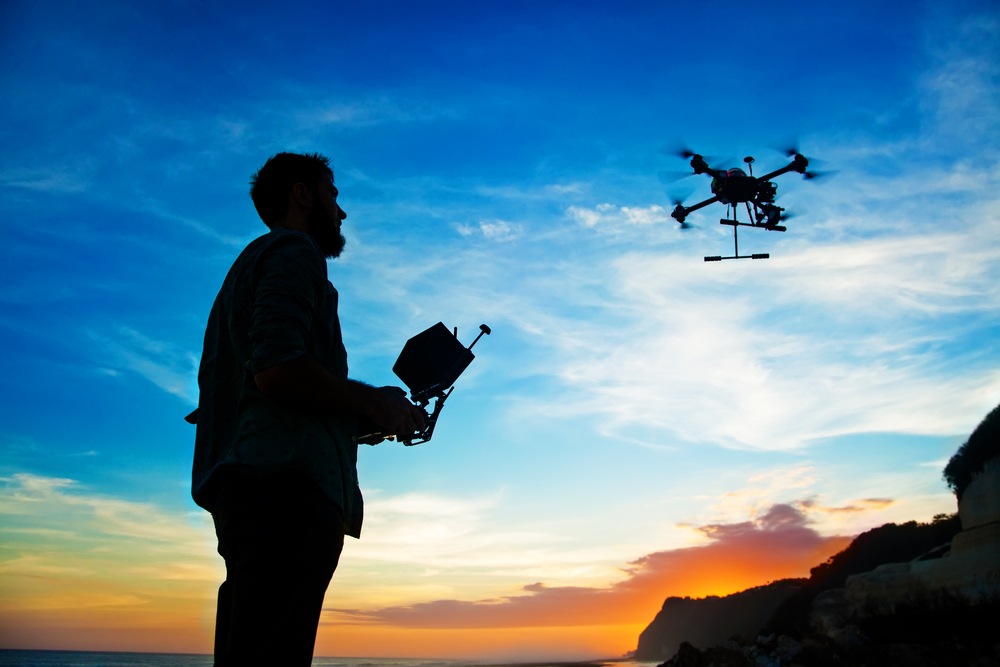Article Highlights:
- The drone attacks on Saudi Arabia’s refineries may be a “Pearl Harbor moment.”
- But there’s a bright side as drones and drone-tracking technologies proliferate.
- This could spell the start of a massive investment trend in commercial aviation.
Last week, I gave a presentation at the Total Wealth Symposium on the investment potential — along with the threats and benefits — of what I call “the new drone economy.”
Little did I know that within hours of my talk, one of my investment theses — that the world’s airports, stadiums and other outdoor facilities need high-tech drone detection gear — would be proven true in spectacular fashion by the drone attacks on Saudi Arabia’s vast oil refineries.
Think it’s a one-off event in an always-troubled part of the world? Think again:
- London’s Gatwick Airport was shut down for hours last Christmas by rogue drones flying near the main runways. Authorities were forced to cancel 1,000 flights, disrupting travel plans for 140,000 passengers.
- Authorities in Virginia recently discovered a crashed drone near a state prison. It held a fist-sized payload of pot, cocaine, a cellphone and the phone’s activation card.
- During 2017’s NFL season, a conspiracy theorist used a drone to drop a payload of pamphlets over the San Francisco 49ers’ home field. Earlier that year, a rogue drone crashed into a fan at the San Diego Padres’ home field.
Drones are set to revolutionize our economy in great ways. But in the wrong hands, they can create chaos on the ground.
At the Total Wealth Symposium this past weekend, I sat down for an interview with Jay Goldberg, one of our editors here at Banyan Hill Publishing.
I explained why the commercial drone industry is on pace to grow 1,000% over the next four years, making it a top tech trend for the 2020s.
Counterdrone Technologies
A regular airport radar can’t “see” a drone. The craft is too small.
However, a new class of device called a tactical radar can easily acquire and track drones within a few miles’ vicinity.
(Source: FLIR Systems)
Usually manufactured in the shape of a small panel, they can be plugged into a computer system to provide what experts call “short-range air defense.”
Most tactical radars are sold for military purposes. But as I detailed for my audience at the Total Wealth Symposium, I suspect we’ll soon see a great many of these systems in place at sensitive or vulnerable locations everywhere.
The drone attacks on Saudi Arabia’s refineries may well be the “Pearl Harbor moment” of these and other counterdrone technologies.
The Next Step for the Drone Economy
These kinds of developments might seem upsetting. But there’s a bright side as drones and drone-tracking technologies proliferate.
The drone delivery and logistics market is currently about $5 billion in size — but destined to grow to nearly $30 billion by 2027.
The key to that growth is creating the equivalent of an air traffic control system for drones.
Tactical radars could form the backbone of that system. Imagine these small panels mounted on cellphone towers, tall buildings and other large structures.
They could create a precise map of the airspace around our neighborhoods and cities.
Once that map is established, authorities could designate flight corridors, automatically monitor legitimate drone activity and clamp down on rogue drones.
Cracking Down on Rogue Activity
If it sounds like a new and scary world, don’t worry — we’ve seen it before.
(Source: National Archives)
In the early days of airplanes, flying was a completely unregulated activity.
One daring pilot landed his craft on the front steps of the Capitol Building. Another plane, equipped with floats, used the Reflecting Pool in front of the Lincoln Memorial as a runway.
In the late 1920s, authorities began requiring pilot licenses and cracking down on rogue activity.
It might’ve spelled the end of flying’s barnstorming days — but it spelled the start of a massive investment trend in commercial aviation.
I suspect the Saudi Arabia drone attacks — and counterdrone technology — may do just the same for America’s young and growing drone economy.
Best of good buys,
Jeff L. Yastine
Editor, Total Wealth Insider
